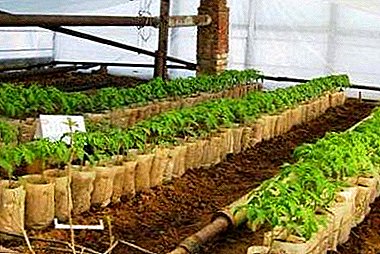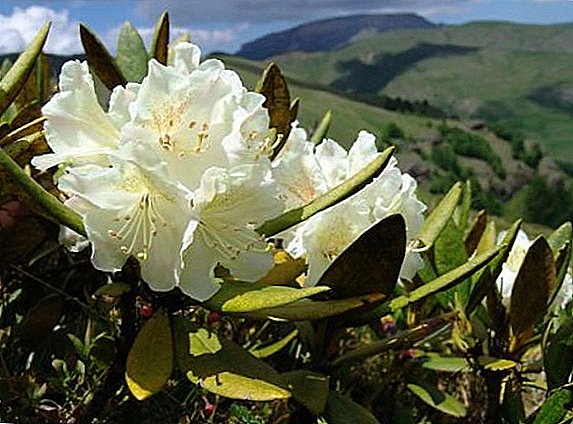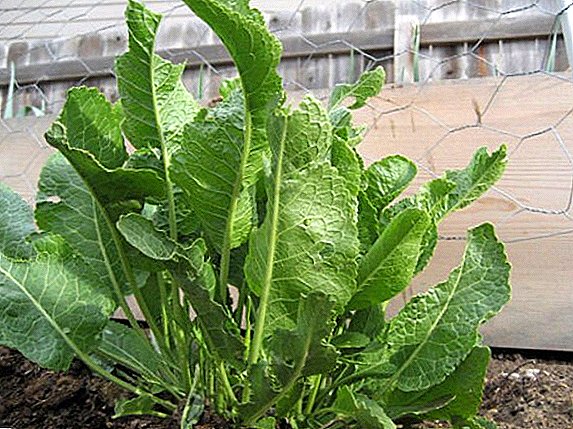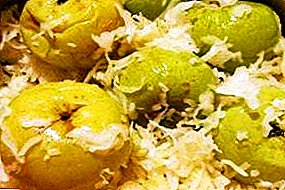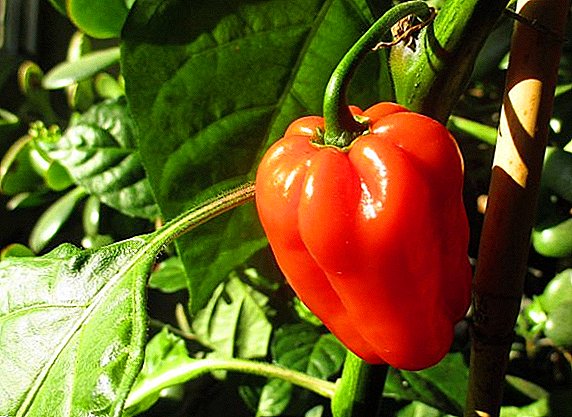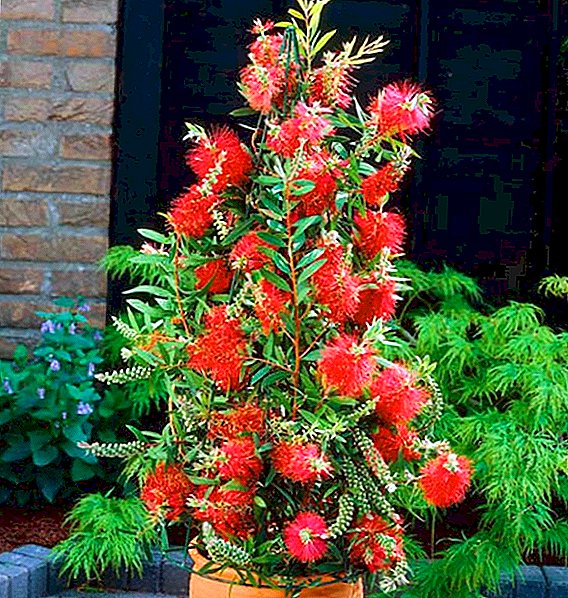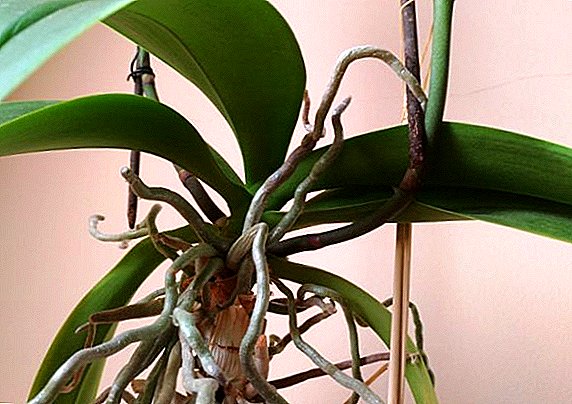 Orchids have long been fond of flower growers for their exotic look and a large variety of species. However, sometimes these flowers begin to produce a lot of aerial roots, and the owners often do not understand what to do with such growth. About solving this problem - further in the article.
Orchids have long been fond of flower growers for their exotic look and a large variety of species. However, sometimes these flowers begin to produce a lot of aerial roots, and the owners often do not understand what to do with such growth. About solving this problem - further in the article.
Features of the root system
Orchids are tropical epiphytic plants. In nature, they use other plants as a support, and in order to hold onto it, they need to have a large number of roots. In addition, with their root system, orchids are able to obtain nutrients and moisture from the environment. 
Structure
The air roots of epiphytes are thick, they are covered with spongy material of dead cells filled with air, which is called velamen. The purpose of the velamen is to absorb moisture and protect the roots from overheating. The thicker the layer of this substance, the more the plant needs watering. The moisture absorbed by the belamen enters the exoderm, from where it is transported throughout the plant.
Did you know? The aerial roots of orchids differ from the roots of other plants in that they do not seek the soil for rooting. They remain hanging in the air and are involved in photosynthesis.
Appearance
Outwardly healthy roots of orchids look like processes from bright white to bright green. The brighter the green color, the more water is in the velamen. Dry and brown roots signal the need for watering. 
The cause of the air roots
Orchids in general are characterized by the presence of a large number of aerial roots.
Learn how to grow beautiful orchid flowers at home.
But when there are too many of them, then there are certain reasons for this:
- The plant needs a transplant.. Potted orchids must be replanted 1 time in 2-3 years.
- High air temperature in the winter. Heating radiators strongly dry the air, so the flowers in search of additional moisture have to increase their root system.
- Too rare watering. As in the previous case, the plant is trying to obtain additional moisture using additional roots.
- Watering too often. With too abundant irrigation, moisture from the soil does not have time to evaporate and the processes of decay begin in it. The roots of the plants in the ground begin to die off, so the epiphytes need to grow new ones.
- Lack of lighting. The aerial roots of epiphyte, like the leaves, serve as photosynthesis. With a lack of light, the plant has to increase the number of roots in order to obtain nutrients.
Is it possible to trim and when to do it
Healthy aerial roots are strictly forbidden to cut. By pruning healthy roots, you can greatly damage the plant and lead it to death. Clipping of aerial roots is only possible if they are damaged, rotting or drying. Rotten roots can be cut at any time.  Pruning the same dry roots, to update the plant, it is better to produce after the end of flowering. Cut-off areas should always be treated with a special agent or crushed activated carbon.
Pruning the same dry roots, to update the plant, it is better to produce after the end of flowering. Cut-off areas should always be treated with a special agent or crushed activated carbon.
Plant Care
Caring for orchids is different from caring for other indoor plants. This is a tropical plant that loves heat, moisture and diffused light. Place the pot with this flower should be so that direct sunlight does not fall on it. However, the plant also does not recognize a strong shadow. Watering orchids is also not very usual.
Did you know? The orchid is the only flower in the world that does not cause allergies.
There are several ways to moisten this plant:
- Dipping the pot in the water. Produced for 10-15 minutes. This time is enough to moisten the soil and root system sufficiently.
- Watering with a watering can. Under the pot with a flower put the pan. Watering is done from above, the water flows into the pan and remains there until it is completely absorbed or dried. The following watering is carried out after full drying of water in the pallet.
- Watering with a warm shower. Orchids are primarily tropical plants, and a warm shower replaces the humid and warm tropical climate.
- Spraying roots. In this way, watering should be done frequently, because using it is difficult to completely saturate the roots with moisture.

There are several ways to feed:
- Root. When watering in water add special fertilizers.
- Leafy. The leaves of the plant are wiped or sprayed with a special solution with fertilizer.
Important! If orchid fertilizing has not been done before, then it should not be started during the flowering period, as it may slow down.
Orchid transplant
Orchid should be replanted 1 time in 2-3 years, or earlier - with a strongly expanded root system. Ordinary universal soil is not suitable for orchids. When planting, you should buy a special mixture or prepare the soil yourself.
The composition of the soil should include:
- charcoal;
- coconut fiber;
- peat;
- expanded clay;
- bark of coniferous trees;
- moss from the swamp;
- perlite;
- vermiculite;
- humus.
When choosing capacity for epiphytes, it is necessary to understand that it will act as a way of adaptation. Epiphytes do not need to be planted in the ground, they can be grown on blocks or snags, but this method is very labor-intensive. Sufficient moisture and microclimate are easier to maintain in the pot. It is best to plant orchids in plastic transparent pots, pre-drilling additional holes in them. Thus, the root system becomes visible, and the owner will understand when the flower needs watering.  In addition, the roots of orchids are actively involved in photosynthesis, and the transparent walls of a plastic pot do not interfere with this. The disadvantages of such pots are their unattractive appearance and inability to keep warm. Orchids in plastic pots should be placed in a warm place. The next most popular are glass pots. They have a more aesthetic appearance, but the moisture from them evaporates worse.
In addition, the roots of orchids are actively involved in photosynthesis, and the transparent walls of a plastic pot do not interfere with this. The disadvantages of such pots are their unattractive appearance and inability to keep warm. Orchids in plastic pots should be placed in a warm place. The next most popular are glass pots. They have a more aesthetic appearance, but the moisture from them evaporates worse.
Important! Vermiculite protects the roots from mold and fungal diseases, so it must necessarily be part of the soil for moisture-loving orchids.
Therefore, watering should be done carefully so as not to overwet the roots. Far less often, orchids are planted in clay pots. They look beautiful, retain heat well, conduct air and moisture, but have the disadvantage of a porous structure. Orchids grow roots to the walls of such pots and get injured during transplantation.
Possible problems and how to deal with them
As with any indoor plants, orchids can have problems growing.
Dry roots
Dry-looking roots are not necessarily dead. In order to understand whether the root is dead, one should press on it - if it does not spring or crumble when pressed, then it can be safely removed. Both the roots in the ground and the air can dry up. The most common cause of drying out is insufficient watering.  Also a common cause is the poisoning of plants with excessive doses of fertilizer or poor quality water. Air roots dry out and with very dry air in the room. Also, the roots may look dried out with a fungal disease.
Also a common cause is the poisoning of plants with excessive doses of fertilizer or poor quality water. Air roots dry out and with very dry air in the room. Also, the roots may look dried out with a fungal disease.
You will be interested to know what to do if the orchid has dry roots.
Rotting root system
The most obvious cause of root decay is excessive soil moisture. Even this situation can occur in the absence of sufficient lighting. In order to avoid this problem, it is necessary to ensure good air exchange in the pot and sufficient lighting. 
Mold appeared
Mold is a fungal disease that occurs as a result of an excess of moisture and heat. All parts of the flower can strike the disease. A severe defeat leads to the death of the plant, so with the slightest sign of need to take control methods. To do this, treat the flower with a solution of copper sulfate. Processing is carried out until the mold disappears. 
Black roots aerial
The causes of blackening of the air roots can be several. One of them is the deposition of mineral salts and damage to the velamen. This happens as a result of watering or spraying low-quality tap water. Another cause is black rot, affecting the plant with inadequate care. It appears when three factors are combined: high humidity, high air temperature and insufficient lighting. Affected roots should be removed, and those that remain should be treated with Floracid.
Read also about whether it is possible to reanimate the orchid if the roots have rotted.
Orchids are beautiful exotic plants that have a root system unusual for ordinary domestic plants. But despite the apparent complexity, caring for this flower will not cause much difficulty if you know the features of its structure.


